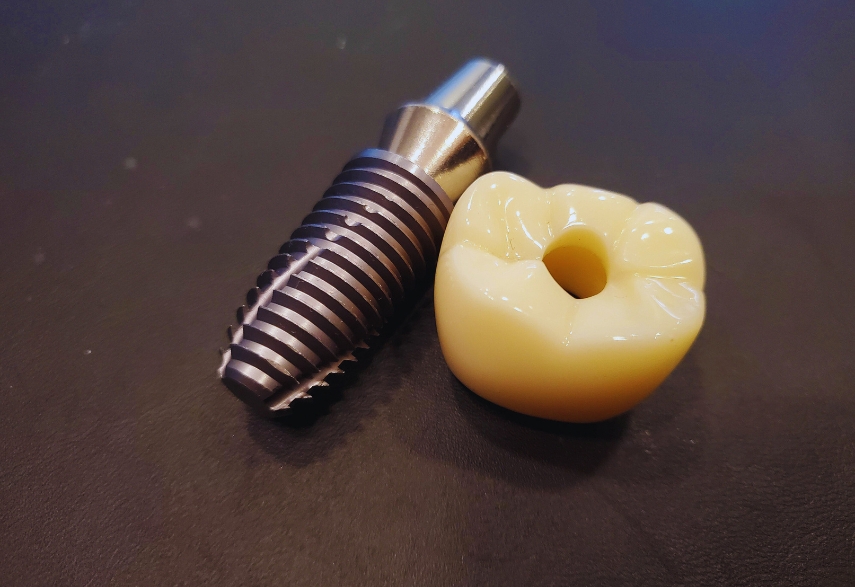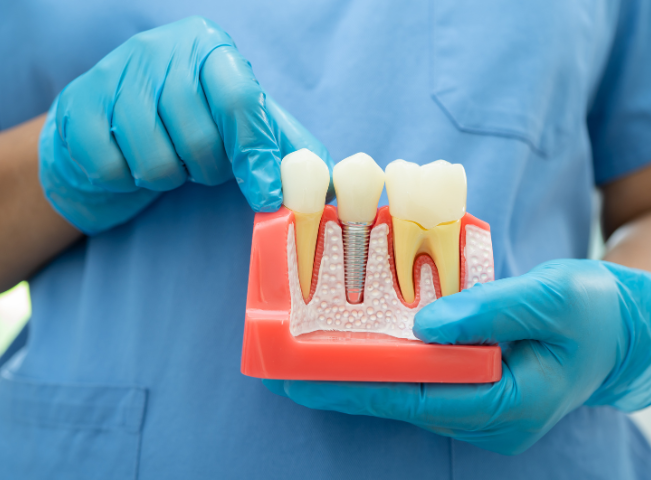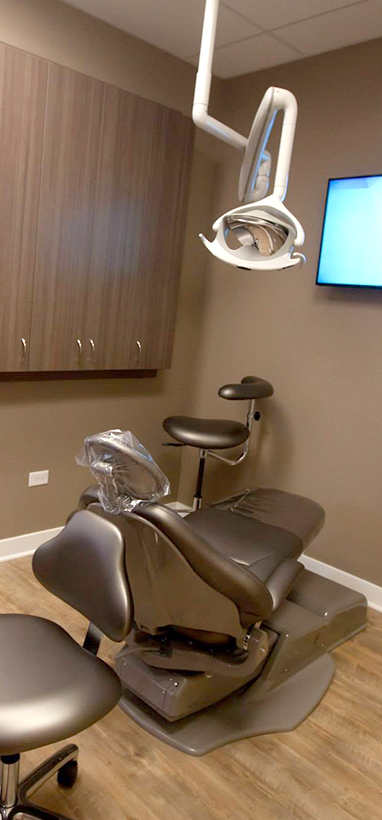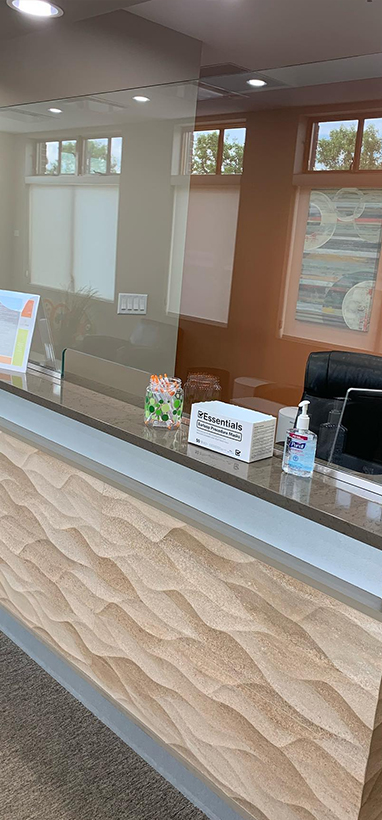1516 Legacy Cir, Naperville, IL 60563
When Can Dental Implants Replace Missing Teeth?

A radiant smile is often regarded as the window to one’s confidence and well-being. However, the unfortunate loss of a tooth can impact both oral health and self-esteem. Fortunately, advancements in dental technology have paved the way for a revolutionary solution – dental implants. These artificial tooth roots have gained prominence for their natural appearance and durability, offering an effective remedy for the restoration of missing teeth. In this comprehensive guide, we delve into the intricacies of dental implants, exploring when they emerge as the ideal option for replacing missing teeth.
Understanding Dental Implants
Dental implants, heralded as a modern marvel in restorative dentistry, represent a groundbreaking solution for individuals grappling with the aftermath of tooth loss. At the core of this innovation lies the concept of mimicking the natural tooth structure to provide a resilient and aesthetically pleasing alternative. Let’s delve into the key components and intricacies that make dental implants a standout option.
Anatomy of a Dental Implant
Implant: The implant is a small, biocompatible titanium post-surgically inserted into the jawbone. Titanium’s unique property of osseointegration allows it to fuse with the surrounding bone over time, creating a stable foundation for the artificial tooth.
Abutment: Connected to the implant, the abutment acts as a connector between the implant and the prosthetic tooth. This piece is essential for securing the crown in place while maintaining the overall stability of the implant.
Crown: The crown, often crafted from materials like porcelain, is the visible part of the dental implant. Custom-designed to match the color, shape, and size of natural teeth, the crown completes the implant, ensuring a seamless and natural-looking smile.
Osseointegration
The biological magic that underpins the success of dental implants is osseointegration. This term refers to the intimate fusion of the titanium implant with the jawbone. During this crucial phase, bone cells grow and adhere to the surface of the implant, effectively anchoring it in place. Osseointegration not only ensures stability but also promotes long-term durability, making dental implants a lasting and reliable solution.
Ideal Candidates for Dental Implants
The suitability for dental implants extends beyond a mere desire for a restored smile; it involves a comprehensive evaluation of various factors that influence the success of the implantation process. Identifying the ideal candidates for dental implants involves a nuanced understanding of both oral and general health. Let’s explore the key considerations that determine who is well-positioned to benefit from this transformative dental solution.
Gum Health: Candidates with healthy gums provide an optimal environment for dental implants. Periodontal diseases can compromise the stability of implants, making it imperative to address any gum issues before undergoing the implantation process.
Jawbone Density: Sufficient jawbone density is a critical factor for the success of dental implants. The implant relies on the jawbone for support and stability through osseointegration. In cases where bone density is insufficient, techniques such as bone grafting may be employed to enhance the implant site.
Oral Hygiene Practices: Individuals with excellent oral hygiene habits are more likely to be successful candidates for dental implants. Regular brushing, flossing, and routine dental check-ups contribute to an environment conducive to the longevity of implants.
When Can Dental Implants Replace Missing Teeth?
The decision to opt for dental implants as a solution for missing teeth involves a careful consideration of various factors, ranging from the extent of tooth loss to the overall oral health of the individual. Here are some of the scenarios and circumstances in which dental implants emerge as the optimal choice for restoring a complete and functional smile.
Single Tooth Replacement
Dental implants shine brilliantly when it comes to replacing a single missing tooth. The implant, acting as a standalone root replacement, offers unmatched stability and functionality. This targeted approach ensures that adjacent healthy teeth remain untouched, a significant advantage over traditional bridges that may require the alteration of adjacent teeth. Moreover, the customized crown attached to the implant seamlessly integrates with the natural teeth, both in appearance and function.
Multiple Teeth Replacement
Beyond individual tooth replacement, dental implants can be strategically positioned to address the loss of multiple adjacent teeth. Instead of relying on removable dentures or extensive bridgework, implants provide a stable foundation for a bridge. This not only restores the aesthetics of a complete smile but also ensures improved chewing capabilities. The ability to support multiple teeth without compromising the integrity of neighboring healthy teeth sets dental implants apart as an efficient and long-lasting solution.
Full Arch Restoration
In cases where an entire arch of teeth is missing, dental implants offer a transformative solution for full mouth reconstruction. The strategic placement of multiple implants provides the necessary support for a fixed denture, eliminating the challenges associated with removable dentures. This comprehensive approach not only restores functionality but also rejuvenates the overall facial appearance by preserving bone density and maintaining the natural contours of the face.
Enhancing Denture Stability
For individuals already using traditional removable dentures, dental implants can enhance stability and comfort. Implant-supported dentures involve strategically placing implants to secure and stabilize the denture, reducing issues such as slippage and discomfort. This not only improves the overall experience of wearing dentures but also enhances chewing efficiency and confidence.
Immediate Implant Placement
Advancements in dental implant technology have paved the way for immediate implant placement in certain cases. This technique involves placing the implant shortly after tooth extraction, streamlining the overall treatment process. Immediate implant placement not only reduces the number of surgical procedures but also contributes to a quicker recovery and, in some cases, eliminates the need for temporary restorations.
The Dental Implant Process
Consultation and Assessment
The journey begins with a thorough consultation and assessment. The dentist Naperville evaluates the patient’s oral health, examines the jawbone density, and discusses the patient’s expectations. This initial step is crucial in determining the feasibility of dental implants and planning the subsequent stages.
Implant Placement
The surgical phase involves the precise placement of titanium implants into the jawbone. This process requires precision and expertise to ensure the implants integrate seamlessly with the natural bone. Patients are often provided with temporary restorations during the healing phase.
Restoration
Once osseointegration is complete, the final restoration phase begins. Customized crowns, bridges, or dentures are securely attached to the implants, providing a functional and aesthetically pleasing result. Regular follow-ups with the dentist are essential to monitor the implant’s success and ensure long-term oral health.
In the realm of modern dentistry, dental implants stand as a beacon of hope for those grappling with the loss of natural teeth. From single-tooth replacements to full-mouth reconstructions, the versatility of dental implants makes them a remarkable solution. As we traverse the journey of implant dentistry, it becomes evident that the timing for dental implants is not only about physical readiness but also emotional preparedness for a life-changing transformation. Embrace the possibilities, restore your smile, and embark on a journey to renewed confidence with dental implants.










